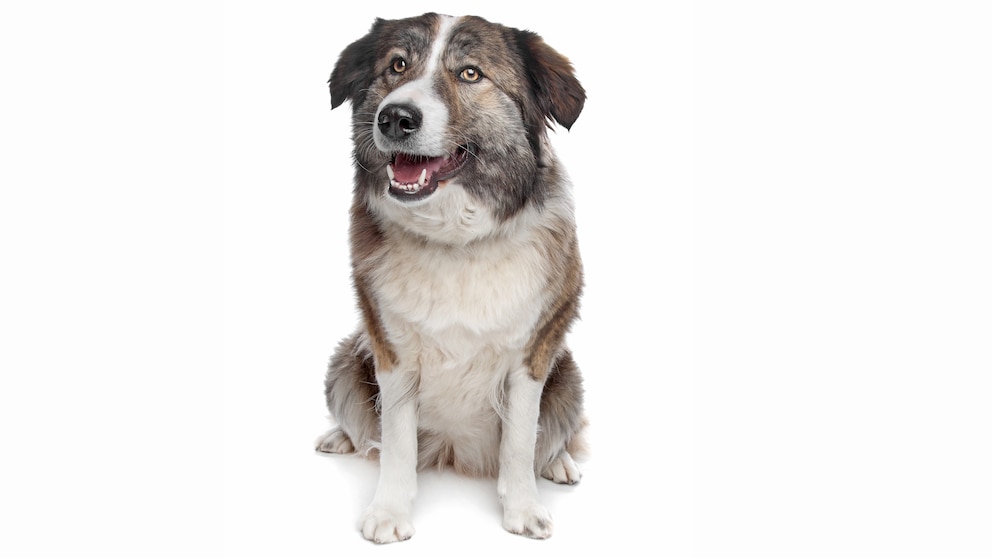March 25, 2025, 9:53 am | Read time: 5 minutes
The Aïdi, also known as the Atlas Mountain Dog, is an original guard and protection dog from the Moroccan Atlas Mountains. With its imposing appearance, thick coat, and unshakeable protective instinct, it has been bred for centuries to protect nomads, villages, and herds of cattle from predators and strangers. But is this powerful and independent dog also suitable for keeping in Central Europe?
The Aïdi is a medium-sized dog breed that is deeply rooted in the culture of North Africa. Its role as a livestock guardian dog has shaped it over generations into an independent, vigilant, and courageous companion. Despite its attachment to its family, the Aïdi remains suspicious of strangers and makes independent decisions when it comes to protecting its territory. These characteristics make the Aïdi an excellent guardian, but also place high demands on its training and management.
While the Aïdi is considered an indispensable protector in its homeland, its introduction into Central European households raises questions. Due to its strong protective instinct and territorial behavior, it is not a typical family dog. Inexperienced owners could quickly become overwhelmed, as this dog needs consistent training and exercise. It also needs plenty of space and activity to do justice to its natural behavior. Therefore, anyone interested in an Aïdi should be aware that this breed is not just a pet but a serious working partner.
Origin
The Aïdi is one of the oldest dog breeds in North Africa and originally comes from the Moroccan Atlas Mountains. There, it was kept by the Berbers and Tuareg nomads as a guard and protection dog. In contrast to European herding dogs, it was not used to herd cattle but to protect people, camps, and herds from predators such as jackals and wolves.
Historical records of the Aïdi are sparse. One of the earliest mentions can be found in Ludwig Beckmann’s 1895 work Die Rassen des Hundes (The Breeds of Dogs), in which an “Algerian Spitz” is described — a name that possibly applies to the Aïdi. It was not until 1963 that the breed was officially recognized by the Fédération Cynologique Internationale (FCI).
Due to the social changes in Morocco and the decline of the traditional nomadic culture, the existence of the purebred Aïdi is now endangered. Crossbreeds with similar guard dog characteristics are often found. In the United States, the breed is not widely recognized, and it may be challenging to find breeders.
Appearance & Coat
The Aïdi is a medium-sized to large, strong dog with a height of 52 to 62 cm. Its weight is not fixed but is usually between 22 and 26 kg. The build is muscular but not heavy and conveys an impressive robustness.
Its semi-long, dense coat is about six inches long and protects it from both extreme temperatures and injury from predators. It comes in many colors, including fawn, brown, black, and pied. The males often have a pronounced neck mane.
The head of the Aïdi is strong and slightly wedge-shaped. The eyes are medium-sized and almond-shaped, with colors varying from dark amber to golden brown. The ears are semi-drooping with slightly rounded tips. The tail is long and bushy, hanging down when at rest and erect when excited.
Character & Disposition
As a typical guard dog, the Aïdi is alert, courageous, and independent. It develops a strong bond with its family but remains suspicious of strangers. Its pronounced protective instinct means that he independently assesses danger and reacts accordingly.
Despite its close bond with its humans, it needs clear and confident leadership. Insecure behavior on the part of its owner can lead to it taking responsibility for itself, which can be problematic. Its behavior towards other dogs and children varies individually and depends heavily on its socialization and training.
Education
The Aïdi is intelligent and capable of learning but requires a dedicated approach to its training. Due to its independence and autonomy, it requires consistent, experienced leadership. Strictness or harshness are counterproductive — instead, patience, clarity, and positive reinforcement are crucial.
Early socialization is essential to steer its protective instinct into controlled channels. Without the right training, its territorial behavior can become a problem. It is, therefore, not suitable for beginners.
Correct Keeping & Care
An Aïdi needs plenty of space and tasks in order to be balanced. A large, well-fenced property is ideal. Keeping them in the city or in a small apartment is not suitable for this breed.
Its coat is easy to groom and only needs to be brushed occasionally. However, due to its thick coat, it sheds regularly, especially during the shedding season. Checking ears and claws is part of routine grooming.
Diet
The Aïdi is undemanding in its diet. A balanced, protein-rich diet with a high meat content is ideal. Raw feeding (BARF) or high-quality wet and dry food are equally suitable. During the growth phase, the protein intake should be controlled in order to avoid excessive growth and the resulting joint problems.
Susceptibility to Certain Diseases
The Aïdi is considered a robust breed with no known hereditary diseases. Due to its originality, it does not show any health weaknesses typical of the breed. It is resistant to extreme temperatures and does not tend to be overweight if it gets enough exercise. Regular veterinary check-ups are nevertheless recommended to detect potential age-related health issues early on.

Status symbol in China Tibetan Mastiff – keeping and caring for the most expensive dog breed in the world

Dachshund, Chihuahua, Shepherd dog 9 dog breeds that are not suitable for beginners

Shaggy coat What you should bear in mind when keeping and caring for the Komondor
The Aïdi at a Glance
- Size: 52-62 cm at the withers
- Weight: approx. 22-26 kg
- Coat & colors: Dense, semi-long
- Character: Alert, independent & suspicious of strangers
- Housing: Large, fenced property required; not city apartments

